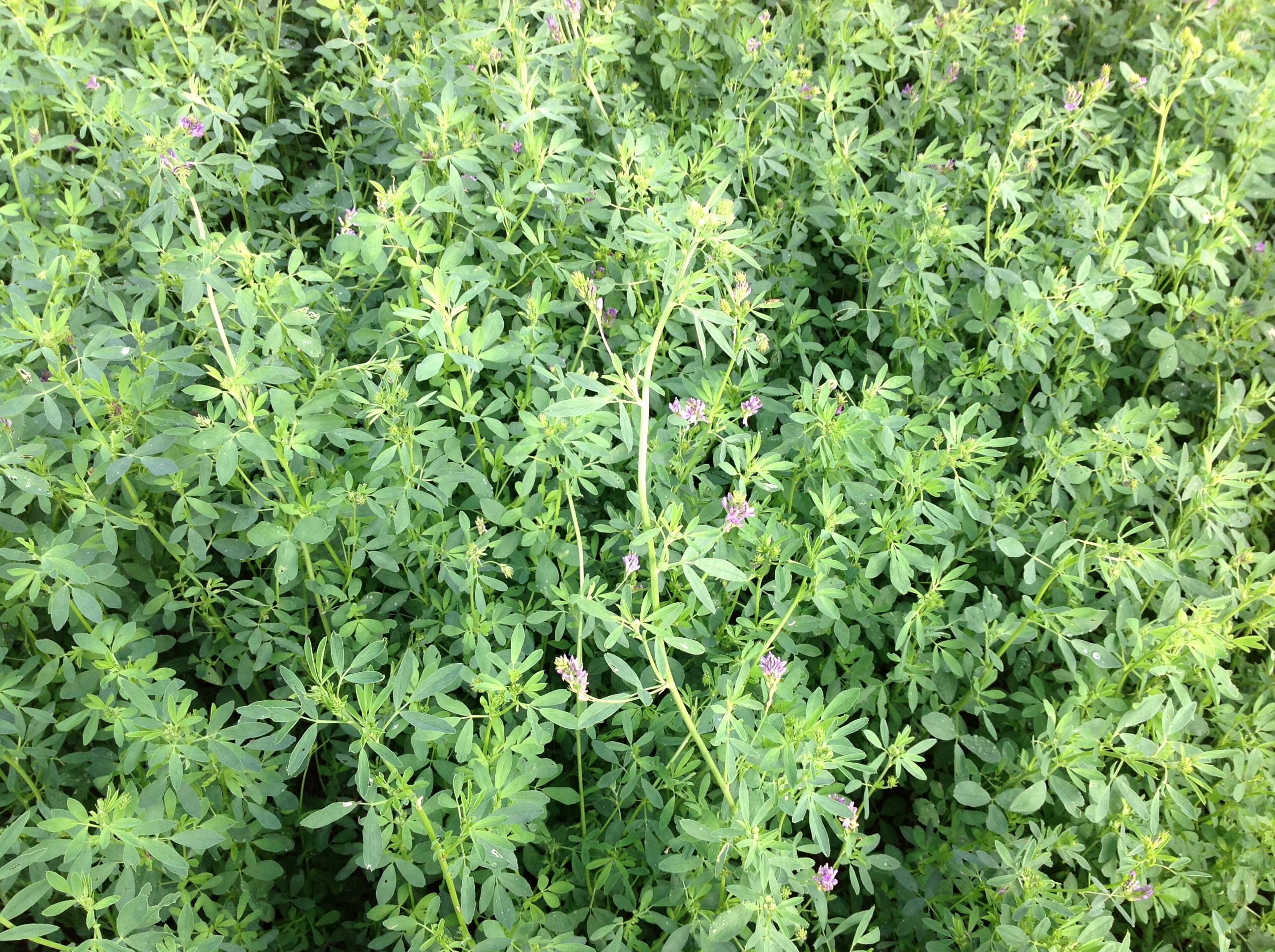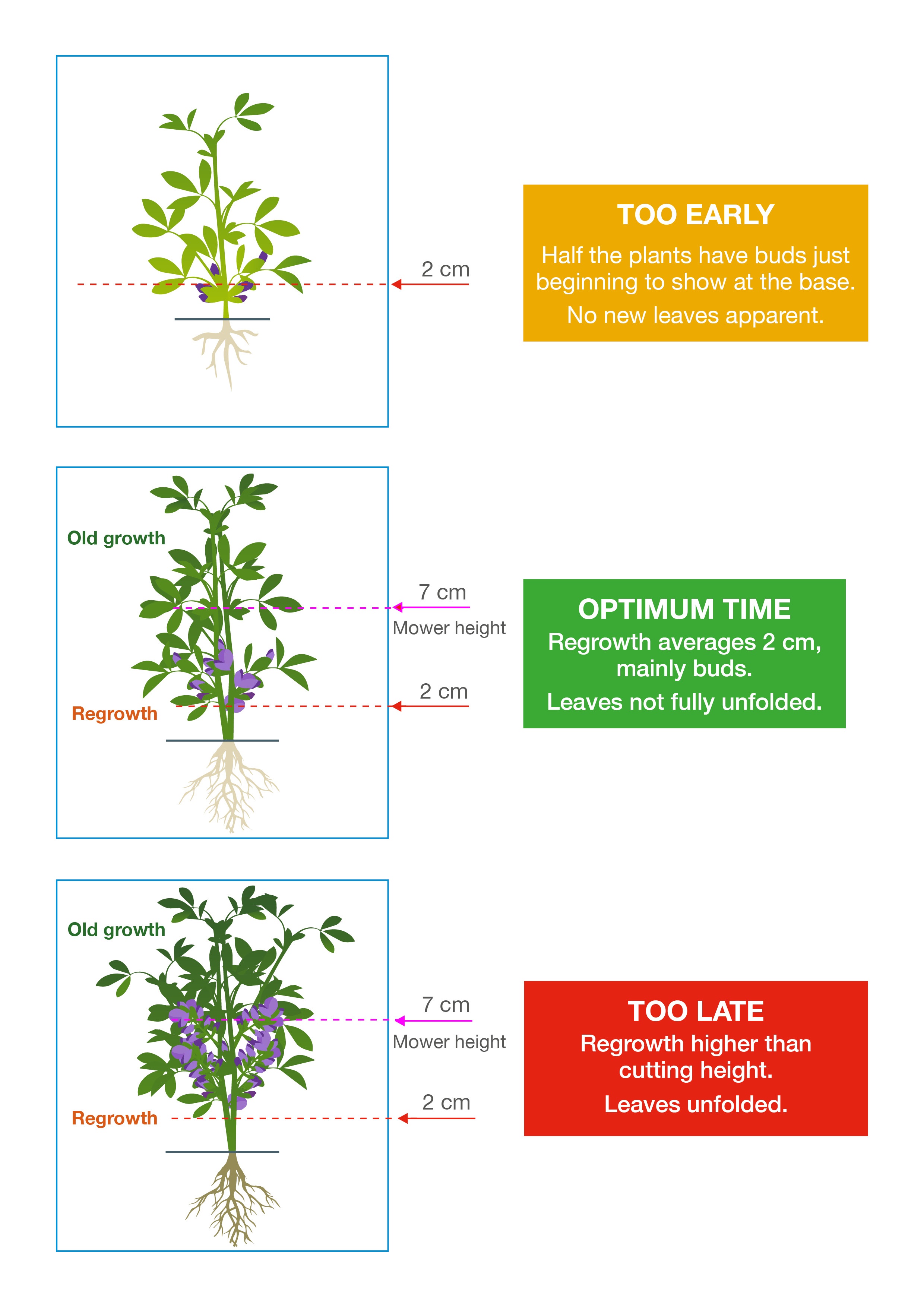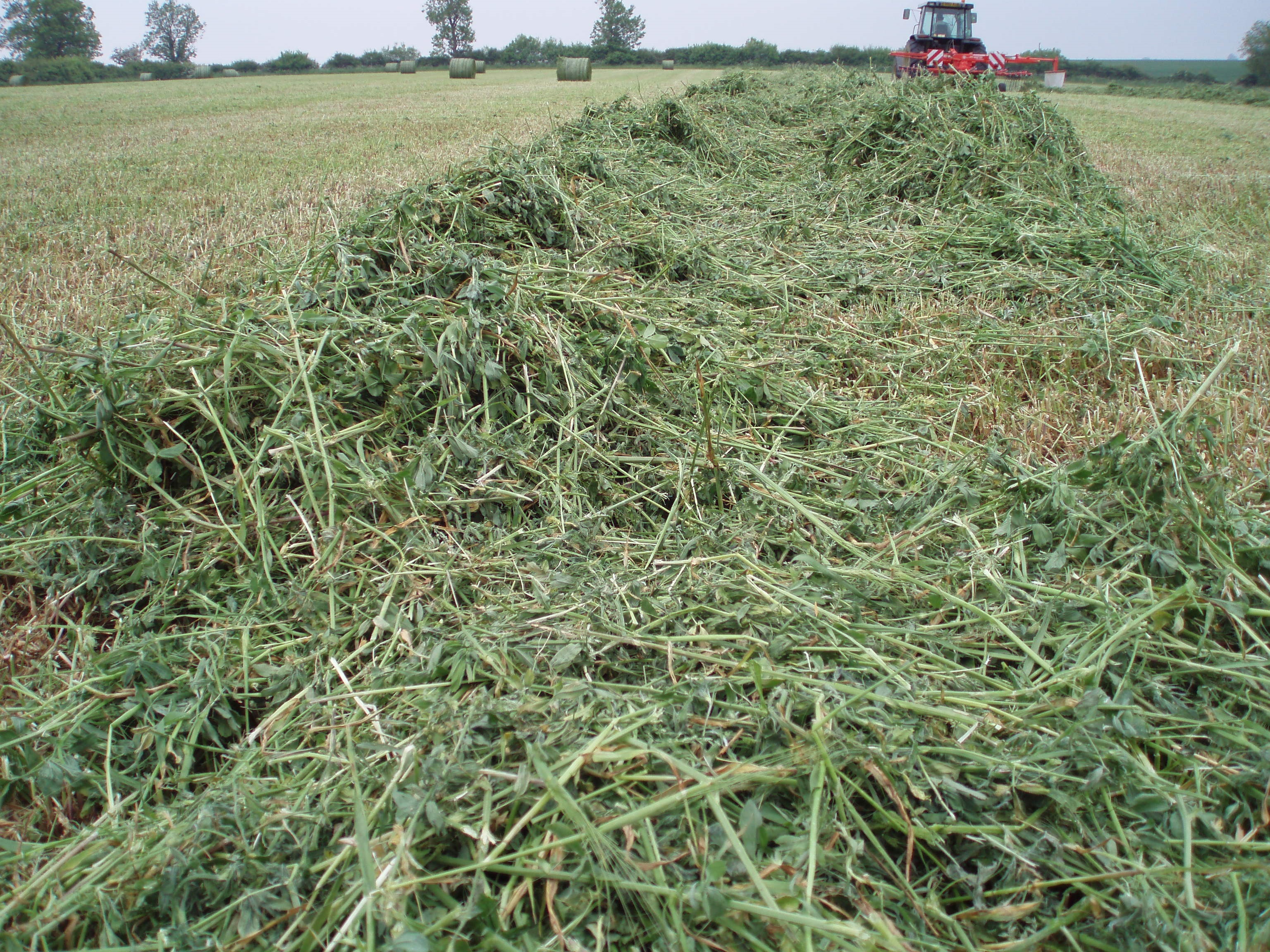- Home
- Knowledge library
- Silaging lucerne
Silaging lucerne

Silaging lucerne
Find out how to mow and wilt lucerne correctly, with top tips to minimise leaf losses and maintain a high protein content.
You can make baled or clamp silage with lucerne. With our weather conditions, high humidity and the low sugar content of lucerne can make it difficult to ensile. Also, lucerne is high in protein and calcium, which will buffer any changes in pH in the clamp/bale.
Good conservation management is key to achieving high quality forage.
Cutting time
In the first year of the crop, you can harvest one or two cuts. After this, however, the crop will be suitable for cutting four to five times a year, typically at five-week intervals.
Typically, you can harvest lucerne from mid-May onwards (depending on location). The first two cuts are often the highest yielding.
The proportion of total yield from lucerne cuts
| Cut | Proportion of total yield (%) |
|---|---|
|
Late May |
35 |
|
Early July |
35 |
|
Mid-August |
20 |
|
Late October/early November |
10 |
Source: Sheldrick et al. 1995
Deciding on the best time to cut can be a compromise between yield, quality and crop persistence. While the protein content of lucerne is greatest at the pre-bud stage, it is believed that routine cutting at this time shortens the lifespan of the crop.
Harvesting
Herbage harvested at full bloom will have a higher proportion of stem. As the crop flowers, the stems become more fibrous and the feeding quality of the forage decreases. Most growers choose to harvest the crop at the point of flower (10–30% flowers open) to balance quality and yield and to ensure there is adequate root development.

To encourage persistency, some growers opt to harvest one flowered crop per year. Work from New Zealand, where research is based around grazing the crop rather than cutting, supports this approach. However, French growers do not do this, because they find the subsequent cut to be of lower quality.
Regrowth of new shoots can also help determine optimum time for cutting. Harvesting when new shoots are visible will ensure good regrowth. However, shoots should be short enough to avoid damaging these with the mower.

Redrawn. Original source: Rural Industries Research and Development Corporation (2012)
Top tips for mowing and wilting lucerne
- Minimum cutting height of 7cm to avoid damage to the crown of the plant. This will also allow good airflow under each swathe, which will help dry the crop
- Wilt the crop to a minimum DM of 30% (40‒50% if baling) to concentrate the sugar content, as direct cut is high in moisture and often too low in sugar
- Roller-type mower conditioners that cut and condition the lucerne by crimping or crushing the stem are preferable to speed up the rate of moisture loss from the stem without extensive damage to the leaf
Lucerne/grass mixtures are thought to be easier to ensile because of the higher grass sugar content.
Leaf losses
Up to 70% of the protein and 90% of the minerals and vitamins in the plant reside in the leaf, so it is important to minimise leaf losses
Because the leaf dries out quicker than the stem of the plant, over-wilting or extensive handling can result in large amounts of leaf shatter.
Raking the crop before the dew has evaporated and reducing tractor speed will help reduce leaf losses.

Additives
Using an additive is advisable when ensiling lucerne. Seek advice from the local merchant or supplier.
Case study: Chris Ruffley, Harper Adams University, Shropshire
Chris gives us his top tips for harvesting high quality lucerne silage.
We feed lucerne silage, alongside maize, to our dairy cows and youngstock. We take the silage process very seriously and achieve consistent analyses. We aim to produce 30–35% DM silage and we only cut if there are three guaranteed rain-free days.
We aim to cut it before it flowers and want four cuts per year. We use a rubber roller mower conditioner and leave a 4-inch stubble. We have found that our choice of mower is gentler and reduces the risk of leaf shatter, but still encourages water loss. On the day of silaging, we cut in the afternoon and leave it in 3-metre (10 ft) swathes behind the mower. We do not touch it on day two. Then, very early in the morning of day three (2:00–3:00am) we will row it up when the dew is on it. It is then picked up by the forager in the afternoon of day three. We use an additive to help fermentation and our choice will alter based on dry matter predictions. We generally sow pure stands, but in 2013, we tried undersowing it with spring barley because we were reseeding 24 ha (60 acres) so wanted to guarantee a good yield off the first cut. A pure stand is still our preference because it works well and lasts four to six years. We perhaps need to think more about nutrient management in the future, because it tends to receive only slurry or separated slurry.
Clamp or bale?
You can make lucerne into clamp or baled silage. Aim for a target DM of 30–40% for clamp silage and 50% for big bale silage.
Top tip: For bales, wrap in at least four layers of plastic to minimise the risk of stems piercing the wrap
Feeding value comparison between lucerne ensiled in a clamp or in a bale
|
|
Clamp |
Bale |
|
Dry matter (%) |
39.1 |
39.8 |
|
pH |
4.3 |
4.4 |
|
Ammonia-N (g/kg total N) |
60.8 |
56.9 |
|
Lactic acid (g/kg DM) |
50.0 |
36.1 |
|
Acetic acid (g/kg DM) |
16.7 |
10.5 |
|
Metabolisable energy (ME) (MJ/kg DM) |
N/A |
N/A |
|
Water soluble carbohydrates (WSC) (g/kg DM) |
3.5 |
8.1 |
|
Crude protein (g/kg DM) |
23.4 |
23.4 |
Source: IBERS, Aberystwyth University
Topics:
Sectors:
Tags:


